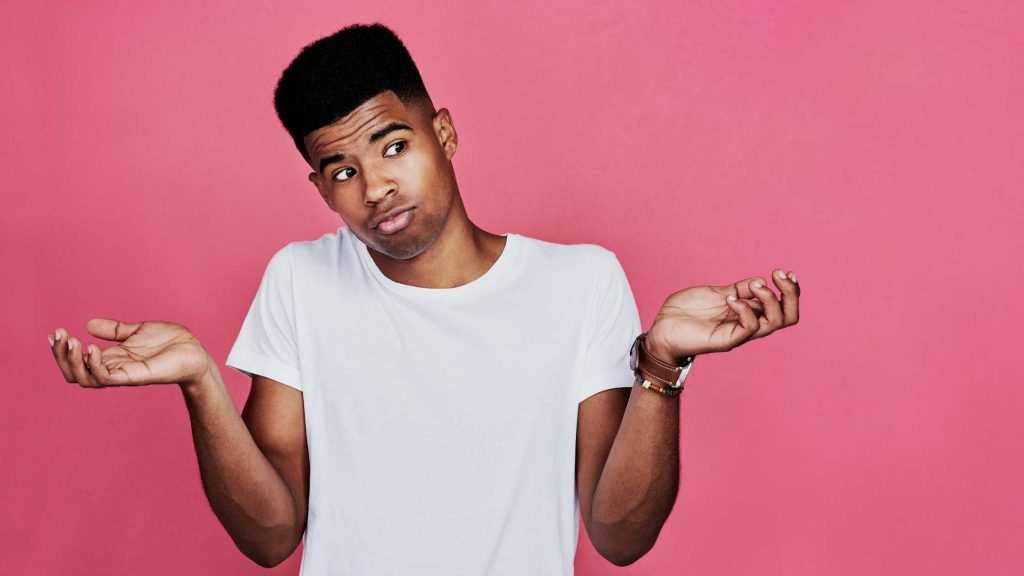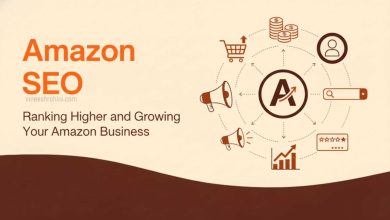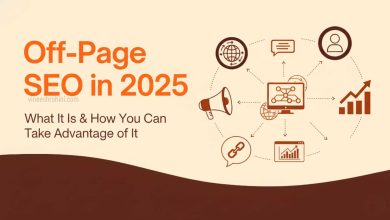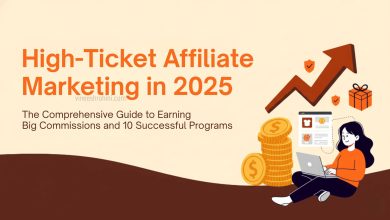How to Avoid Digital Ad Fatigue : Comprehensive Guide 2025
How to Avoid Digital Ad Fatigue : As digital advertising continues to dominate brand marketing strategies, a critical challenge that marketers face in 2025 is digital ad fatigue. Ad fatigue occurs when audiences see the same or similar ads too frequently, resulting in a decline in engagement, click-through rates, and conversions. In a landscape where consumers are exposed to over 6,000 ads per day, avoiding ad fatigue is not just strategic—it’s essential for survival in the competitive digital space.
Table of Contents
This comprehensive guide explores everything you need to know about how to avoid digital ad fatigue in 2025. We’ll break down what it is, why it happens, and most importantly, the best practices, tools, and creative strategies to keep your ads fresh, engaging, and profitable. Whether you’re a digital marketer, small business owner, or content creator, this guide is packed with high-ranking insights to ensure your ads drive results—not exhaustion.
What is Digital Ad Fatigue?

Digital ad fatigue refers to a situation where audiences become tired or annoyed by repetitive advertising content, resulting in diminished attention, reduced interaction, and eventual ad blindness. This typically occurs when a user sees the same ad creative or message too frequently across platforms, which causes cognitive saturation and emotional detachment.
Signs of Ad Fatigue:
- Declining click-through rates (CTR)
- Reduced engagement on social media ads
- Increased cost-per-click (CPC)
- Lower conversion rates
- Negative feedback (e.g., hiding the ad, reporting spam)
In 2025, with algorithms delivering ultra-targeted ads on every platform—from G and YT to FB, Insta, TikTok, and LinkedIn—preventing ad fatigue has become more complex but more critical than ever.
Causes of Digital Ad Fatigue
1. Repetitive Creatives
Audiences quickly tire of seeing the same image, video, or headline across multiple touchpoints.
2. Narrow Targeting
Over-targeting the same audience segments causes users to be overexposed.
3. Long Campaign Durations
Running the same campaign for weeks or months without adjustments leads to creative burnout.
4. Lack of Personalization
Generic ads that don’t resonate with user interests or behaviors fail to capture attention.
5. Ad Saturation
A brand running too many ads within a short time frame overwhelms the audience.
Also Read : How to Write a Content Brief
Why Avoiding Ad Fatigue is Crucial in 2025
With AI-driven platforms optimizing ads for delivery speed and reach, consumer expectations are higher than ever. Users demand contextually relevant, entertaining, and value-driven ad experiences. Ignoring ad fatigue leads to:
- Wasted ad spend
- Reduced ROI
- Brand apathy or resentment
- Poor user experience
In contrast, campaigns that prioritize freshness, engagement, and intelligent targeting enjoy higher returns, better brand perception, and longer campaign life cycles.
How to Avoid Digital Ad Fatigue in 2025 – Step-by-Step Guide
Step 1: Rotate Ad Creatives Regularly
Keep your campaigns visually and conceptually fresh.
- Create multiple variations of each ad (different headlines, images, CTA).
- Use A/B testing to evaluate performance.
- Rotate creatives every 7–14 days based on engagement trends.
Pro Tip: Tools like Canva Pro, Adobe Express, and Lumen5 make it easy to produce multiple designs and video variants quickly.
Step 2: Use Dynamic Creative Optimization (DCO)
DCO allows ads to automatically adjust elements like images, headlines, or CTAs based on user behavior and preferences.
- Platforms like Meta Ads, G Display Network, and TikTok Ads support DCO natively.
- Automates personalization at scale.
- Reduces redundancy by delivering varied combinations to each viewer.
Step 3: Segment Your Audience Strategically
Avoid targeting the same users across all platforms simultaneously.
- Use behavior-based segmentation (cart abandoners, page viewers, loyal customers).
- Create lookalike audiences for diversity.
- Exclude recently converted users to avoid wasted impressions.
High-Intent Audience Segments to Consider in 2025:
- Subscription openers (email)
- Social media engagers
- App downloaders
- Long-time inactive users
Step 4: Limit Ad Frequency Caps
Prevent overexposure by setting frequency limits.
- On Meta (Facebook/Insta): Use frequency capping in ad set level.
- On G Ads: Adjust ad rotation and impression caps per user.
- TikTok & LinkedIn also allow capping through custom settings.
Optimal Frequency:
- Awareness Campaigns: 1–2x per day per user
- Retargeting: 3–5x per week
- Conversions: Frequency balanced by ROAS
Step 5: Leverage User-Generated Content (UGC)
Authentic, relatable content reduces fatigue and boosts engagement.
- Include customer reviews, testimonials, unboxing videos, influencer shoutouts.
- Use tools like Billo, Influenster, and Modash to scale UGC.
- Combine UGC with paid campaigns for fresh, community-driven creative.
Step 6: Automate Performance Monitoring and Alerts
Use real-time performance analytics to detect ad fatigue before it escalates.
- Set up alert triggers in Meta Ads or G Ads (e.g., CTR drops below 0.5%).
- Use dashboards (G Data Studio, Supermetrics) for live monitoring.
- Pause underperforming creatives automatically using ad rules.
Step 7: Test Across Multiple Formats and Platforms
Don’t rely solely on one channel or ad format.
- Mix static images, videos, carousels, reels, and stories.
- Try new formats like YouTube Shorts, TikTok Spark Ads, or LinkedIn Conversation Ads.
- Diversify platforms: Meta + TikTok + G + Reddit + Snapchat + Pinterest.
Cross-platform diversity keeps your brand from feeling repetitive and engages users where they’re most active.
Step 8: Personalize Ads with AI and First-Party Data

In the privacy-first era of 2025, first-party data is gold.
- Leverage CRM data to personalize messaging (location, last purchase, browsing behavior).
- Use AI-powered tools like Persado, Copy.ai, and Jasper to tailor ad copy by persona.
- Integrate with CDPs (Customer Data Platforms) for unified audience insights.
Step 9: Implement Sequential Storytelling
Rather than showing the same ad repeatedly, use sequenced storytelling.
- Deliver ads in a narrative format (Intro > Product > Testimonial > Offer).
- Keeps users engaged while gradually moving them down the funnel.
- Works best on platforms like YT, Insta Reels, and TikTok.
Step 10: Refresh Your Landing Pages Too
Even the best ad can fail if the destination is outdated.
- A/B test landing pages every 2–4 weeks.
- Use dynamic content tools (like Instapage or Unbounce Smart Text) for personalization.
- Align landing page visuals with ad creatives for consistency.
Tools to Help Avoid Ad Fatigue
| Tool | Purpose |
|---|---|
| Canva Pro / Adobe Express | Fast ad design variations |
| G Ads Editor | Manage and rotate ad sets efficiently |
| Meta Ads Manager | Frequency control, audience insights |
| Hootsuite / Buffer | Ad copy scheduling and variation |
| AdCreative.ai | AI-based creative generation |
| Segment / HubSpot CRM | Audience segmentation and personalization |
| Smartly.io / Madgicx | Ad automation and fatigue monitoring |
Real-World Examples
🛍️ E-commerce Brand:
Problem: 40% drop in ROAS due to repeating same holiday creative for 3 weeks.
Solution:
- Introduced 5 new visual variations every week.
- Shifted from static to GIF and carousel ads.
- Used frequency capping at 2 impressions/day.
- Added UGC-based retargeting.
Result: CTR improved by 37%, and ROAS rebounded by 60%.
🚀 SaaS Company:
Problem: LinkedIn ads received poor engagement after 14 days of exposure.
Solution:
- Switched from product-centric to problem-solving video ads.
- Applied a storytelling sequence across ad sets.
- Included employee testimonials and onboarding walkthroughs.
Result: Cost-per-lead dropped by 45%.
Ad Fatigue and Algorithm Behavior in 2025
Understanding how platform algorithms work is critical.
Meta (FB/Insta)
- Penalizes high-frequency, low-engagement ads.
- Prefers fresh creatives in Reels and Stories.
G Ads
- Smart Bidding adjusts delivery based on engagement.
- Rotates ads unless “Optimize” is selected.
TikTok
- Creative-first algorithm rewards freshness and authenticity.
- Limits stale ads in user feeds.
Key Takeaway: Ad freshness directly influences algorithmic prioritization and CPM (cost per 1,000 impressions).
Future Trends to Watch in Ad Fatigue Prevention
1. AI-Created Personalized Ads
Real-time ad variations created by AI based on context and emotion.
2. Conversational Commerce Integration
Chatbots and WhatsApp campaigns that adapt messaging based on user replies.
3. Voice-Driven Ad Personalization
Smart speakers delivering product promos based on spoken queries.
4. Immersive Formats
AR/VR and metaverse-based ads offering interactive engagement.
5. Emotion Detection
AI-powered systems that change ad tone based on facial recognition and mood detection (in consent-based systems).
How to Avoid Digital Ad Fatigue – Conclusion

In 2025, avoiding digital ad fatigue is more than a best practice—it’s a competitive edge. With audiences increasingly sensitive to irrelevant or repetitive content, brands that focus on creative diversity, personalization, and strategic delivery will lead the way in engagement and conversions.
Buy Now : Video Sharing Platform
By rotating ad creatives, leveraging automation, embracing UGC, segmenting smartly, and watching the data closely, you can outmaneuver ad fatigue and keep your brand message fresh and effective. The key lies in staying agile, testing continuously, and placing the customer experience at the center of your advertising strategy.
Disclaimer : This content is for informational purposes only. Please ensure that all advertising practices comply with relevant platform policies, consumer protection laws, and privacy regulations applicable in your region.
Keywords : How to Avoid Digital Ad Fatigue – How to Avoid Digital Ad Fatigue 2025 – How to Avoid Digital Ad Fatigue Guide



